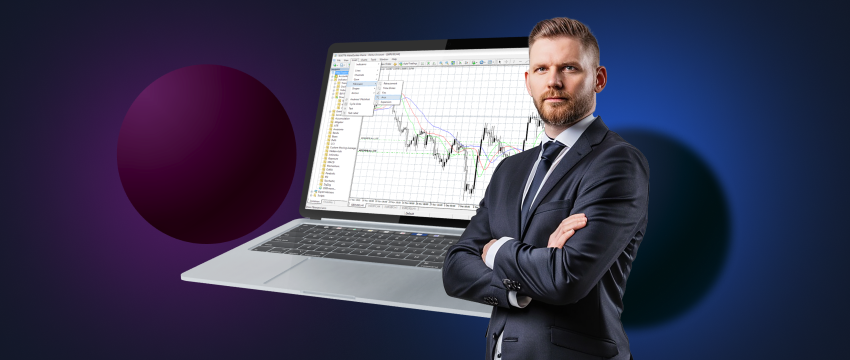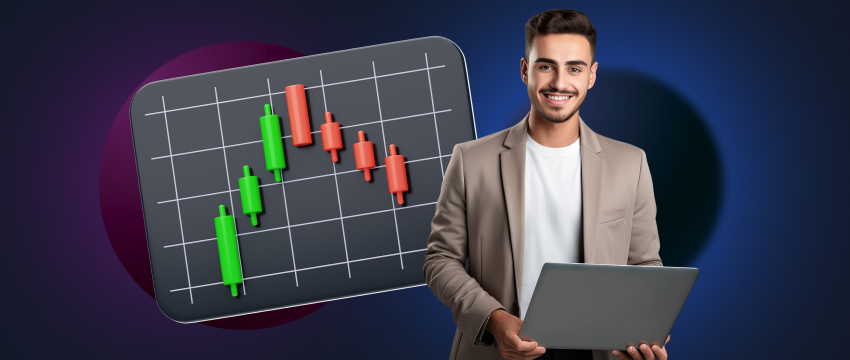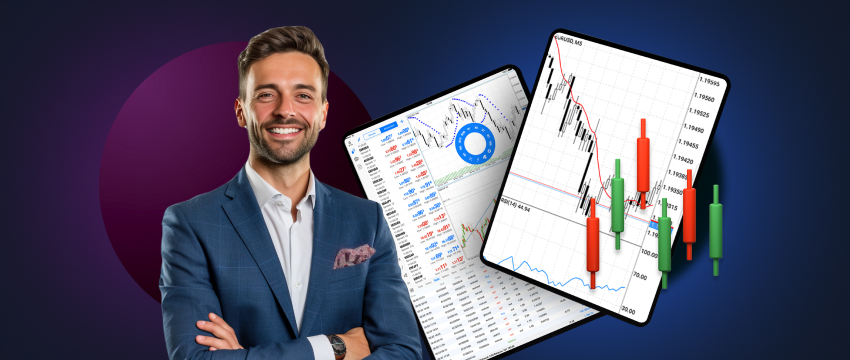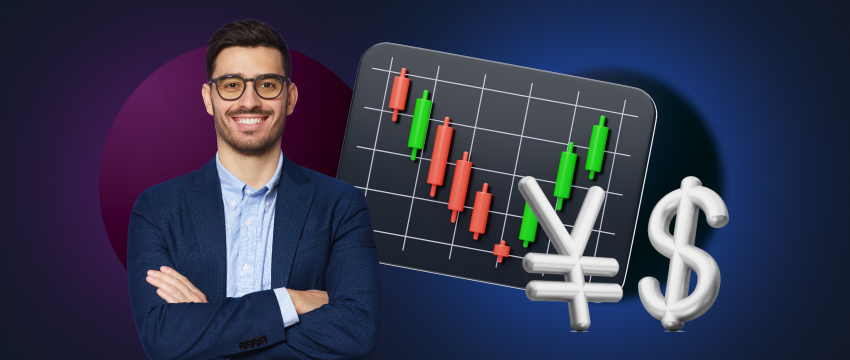Trading is more than just speculation. It entails having a proper strategy in place, and the most effective trading tools to support that strategy. In this blog, we’ll touch on the tools used by traders worldwide.

1. MetaTrader 4, developed by MetaQuotes Software almost 2 decades ago
You need a trading platform to execute trades. It’s also pivotal for conducting technical analysis or to deploy automated trading strategies. One of the most popular trading platforms in the world is MetaTrader 4 (MT4).
It provides traders with advanced trading and analytical technologies and describes itself as having “everything you need for forex trading.” MT4 allows traders to execute strategies of any complexity.
Extensive trading tools
MetaTrader 4 provides a range of tools, including market and pending orders, instant execution, chart-based trading, stop-orders, trailing stops, and more. We designed these features to enhance flexibility and convenience.
Additionally, MetaTrader 4 offers 3 execution modes. Furthermore, it provides 2 market orders. In addition, there are 4 pending orders. Moreover, it includes 2 stop order options. Finally, a trailing stop is also available.
Advanced analytical functions
MetaTrader 4’s advanced analytical functions are among its strongest features. This includes online quotes. Additionally, it features interactive charts. These charts span across 9 timeframes. As a result, traders can examine price movements in detail. Moreover, they can respond quickly to changes.
With 23 analytical tools and 30 built-in technical indicators, MT4 simplifies complex analysis. The free Code Base and built-in Market expands options with thousands of additional indicators, maximising analytical possibilities.
Trading signals
MetaTrader 4 makes trading accessible even for those short on time with its powerful trading signals and copy trading features. Simply choose a provider, subscribe to a signal, and let the platform automatically replicate their trades in your account.
With thousands of free and paid signals available, you have a wide range of strategies and trading conditions at your disposal.
2. Technical indicators
Understanding the purpose of technical indicators is a vital part of trading. They help a trader analyse price fluctuations, spot market trends, and speculate on how the market will perform.
This information is important for making informed trading decisions, be this to enter or exit positions.
Traders can choose from many technical indicators, often using them in combination with one another.
These are some of the more popular indicators used by traders at all levels globally:
- Les moyennes mobiles: determine the average price of an asset over a specific period. For e.g., the 20-day simple moving average (SMA) on a daily price chart shows the asset’s average price over the past 20 days.
- Bollinger Bands: enhance the analysis provided by MA’s by incorporating two extra lines or bands. One is positioned above the SMA, and one is positioned below it. These outer bands represent standard deviations of the price, suggesting that the price will likely stay within these bands most of the time.
- Oscillators: evaluate price data to determine how closely an asset’s price aligns with its typical range. By examining how prices fluctuate between the two levels on a chart, oscillators reveal the momentum driving price movements. This makes them useful for identifying whether a trend is likely to persist or reverse.
- Relative Strength Index (RSI): measures the strength of an asset’s recent gains in relation to its losses. It displays results as a score from 0 to 100. When the RSI approaches 100, it indicates that the market may be ‘overbought,’ while a reading near 0 suggests that the market may be ‘oversold.’
- Fibonacci Retracement: a calculation rooted in the Fibonacci sequence, used to assess the probability of price pullbacks. It assists traders in spotting potential support and resistance zones by analysing historical trends.
- Ichimoku Cloud: a sophisticated indicator that consists of five lines – two act as support and resistance levels, while others generate buy or sell signals when they intersect with range lines. It combines moving averages, standard deviations, and various other calculations.
Other commonly used technical indicators include Parabolic SAR, Stochastic Oscillator, Exponential Moving Averages, Average Directional Index, Average True Range, etc.
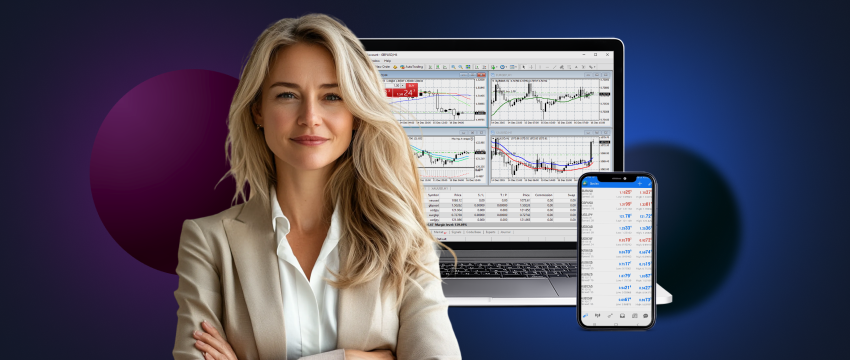
3. Trading tool: Economic Calendar
Economic Calendars are incredibly useful tools for beginner traders who seek to better understand the impact of news events on financial markets.
The calendars typically list upcoming economic releases and events that influence prices, particularly in stock and foreign exchange markets.
T4Trade Economic Calendar
T4Trade traders can access Le calendrier économique de Trading Central which provides real-time economic coverage, enabling traders to track and react to potential market-moving events.
Also the calendar lets you map over 115 forex charts to events, monitor currency pairs, and access economic events from 38 countries, which you can map to target indices.
Additionally, the calendar also allows you to monitor historical trends and the way in which they impact currencies, as well as access real-time macro-economic data.
4. Risk management trading tools and techniques
Trading is incredibly risky, enough so that upward of 90% of all traders lose all their money. This implements risk management tools incredibly important to safeguard your capital. There are a variety of tools that traders make use of. The most commonly used are:
- Stop-loss and take-profit orders: these orders are automatically triggered when specific price levels are reached. In the case of stop-loss orders, the objective is to limit losses, whereas for take-profit orders, the goal is to lock in profits.
- Position sizing: while not a tool per se, this tactic is used to reduce losses by investing no more than 1-2% on a single trade.
- Portfolio diversification: like position sizing, portfolio diversification is a strategy utilised to spread risk across multiple asset classes. By investing capital into different assets, as opposed to just one, you can reduce the impact of any single asset’s poor performance on your overall portfolio.
- Technical and fundamental analysis: managing risk effectively means knowing how to conduct in-depth d'analyse technique et fondamentale for informed decision making.
- Utilisez des outils: managing leverage is probably one of the most essential techniques for managing risk and protecting your money. Be mindful of the amount of leverage you use so as to avoid amplifying potential losses.
5. Sign up for a demo trading account
Another great tool for becoming a skilled trader is a demo trading account. By signing up for such an account, you’ll gain access to a virtual trading environment to practice trading.
Simulating real life market conditions, you can enter and exit positions and then assess outcomes. You can become more familiar with technical analysis, and more importantly, technical indicators, which are the basis for all trading decisions.
The fact that you can do this using virtual funds also provides you with the peace of mind that as you gain necessary trading experience, your own capital is protected.
Consider complementing the learning that you’ll engage using a demo trading account with more conventional educational tools. This includes reading blogs and articles, listening to videos or podcasts, and attending webinars or seminars.
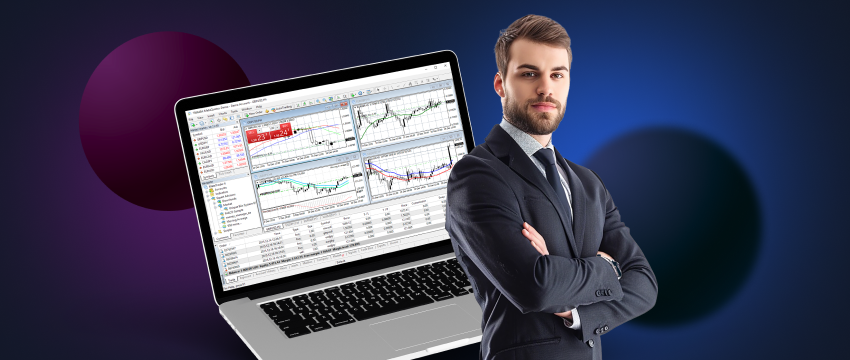
Use Trading tools with T4Trade
T4Trade est un courtier international populaire qui compte des clients dans le monde entier. Le courtier offre un support client multilingue de premier ordre, 24 heures sur 24 et 5 jours sur 7, des plateformes à la pointe de la technologie et des conditions de trading flexibles.
T4Trade est également une excellente ressource pour les traders qui cherchent à en savoir plus sur le trading du forex d'une manière conviviale.
Une variété de vidéos, de podcasts, d'eBooks, de webinaires et de vidéos à la demande sont élaborés par des spécialistes internes et s'adressent à tous les types de traders.
T4Trade traders can also choose from a wide range of trading instruments across 6 asset classes, and enjoy flexible leverage, des écarts compétitifs., fast trade execution and seamless deposit and withdrawal options.
Traders can also choose from multiple trading accounts that best suit their needs and individual preferences.
CLAUSE DE NON-RESPONSABILITÉ : Ces informations ne sont pas considérées comme des conseils ou des recommandations en matière d'investissement, mais plutôt comme une communication commerciale.
